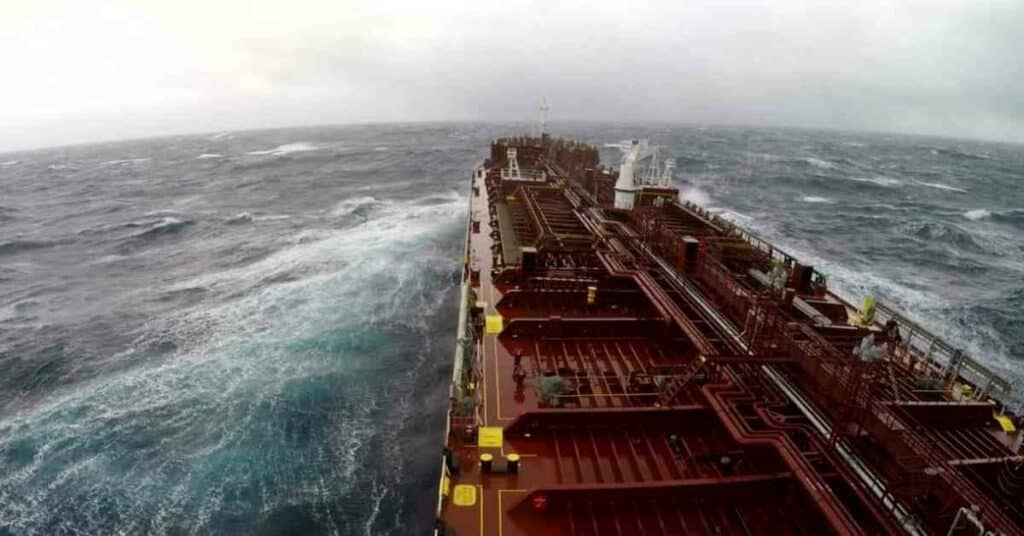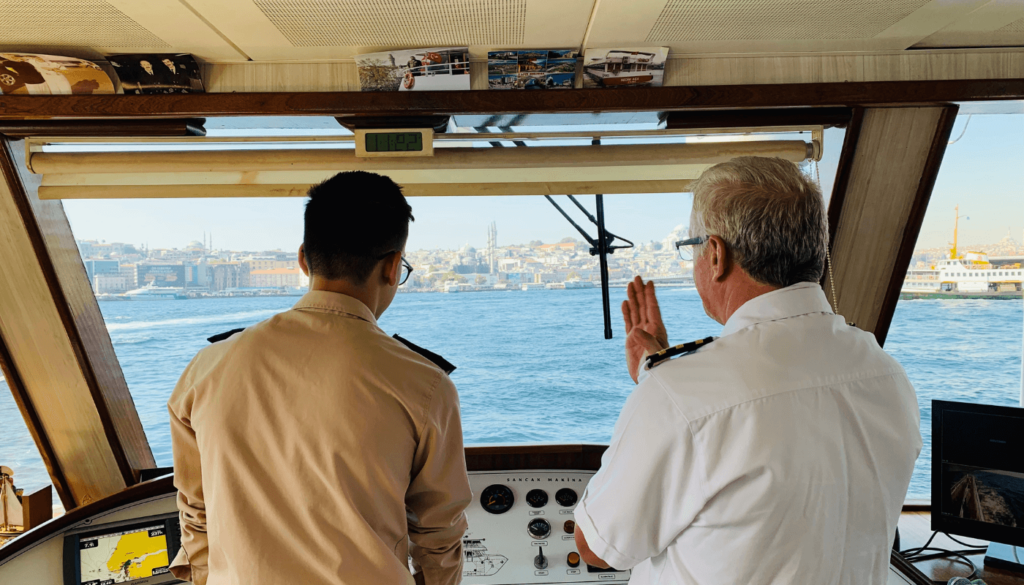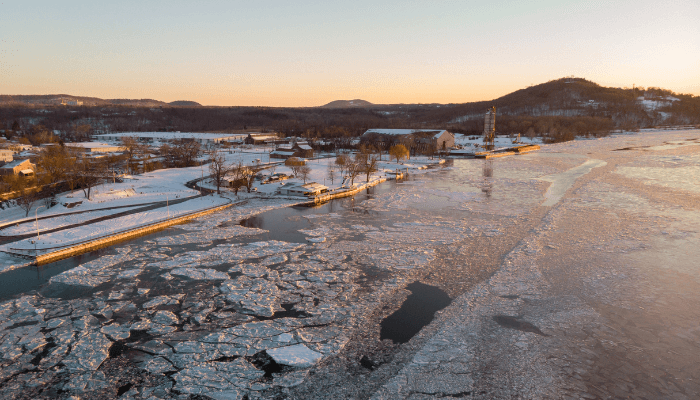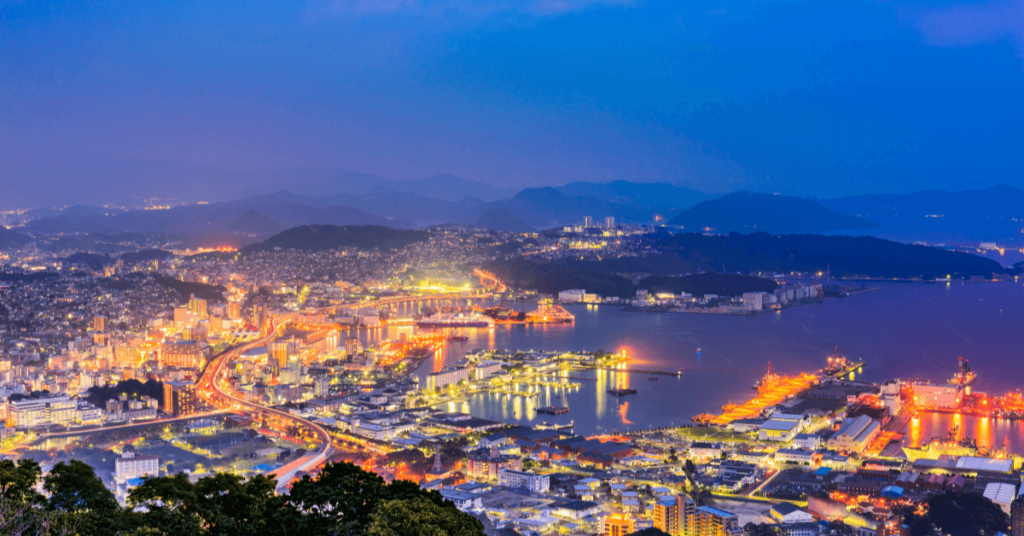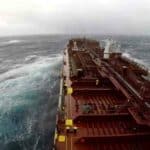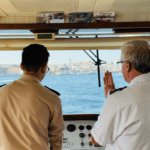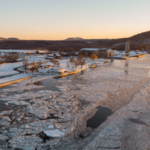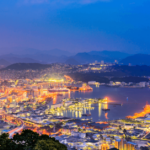13 Gulf Of Riga Facts You Must Know
The Gulf of Riga lies between Latvia on the north coast and Estonia on the east coast, forming a natural border between the two countries. Geographically, it is pretty shallow compared to other gulfs and is an enclosed water body in the northeastern Baltic Sea.
The International Hydrographic Organization set the western border of the Gulf of Riga at 57°34’N and 22°34’E. This extends into Estonia and Latvia, covering Oesel Island, Pammerort, Enmast Point, Dago, Takhkona Point and Spithamn Point.
The Gulf of Riga is also called Rigas Juras Licis in Latvian and Rizhsky Zaliv in Russian. It is also referred to as the Bay of Riga and the Gulf of Livonia. The island of Saaremaa, which belongs to Estonia, partially separates the Gulf of Riga from the Baltic Sea.
Numerous coastal settlements famous among tourists lie on the Gulf of Riga’s coasts. Many ports and harbours along the Gulf of Riga drive trade and commerce in the region, making it a strategic water body.
Spanning approximately 6900 square miles, the Gulf of Riga includes the Vainameri Sea and is linked to the Baltic Sea mainly via the Irbe Strait.
A sub-basin of the Baltic, the Gulf of Riga has historical, economic and ecological significance, making it a fascinating area to study and explore.
Read ahead to know 13 exciting and never-heard-before facts about the Gulf of Riga.
1. Gulf of Riga covers 18,000-kilometre square of area
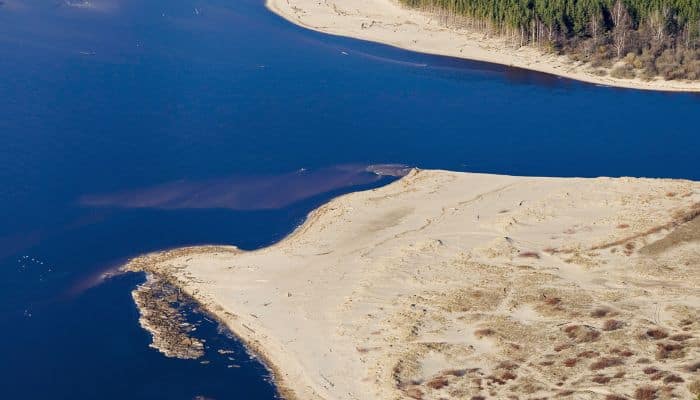
The Gulf of Riga, or the Gulf of Livonia, spans 6900 sq miles or 18,000 km sq of area. The coasts of the Gulf of Riga are low, and its maximum depth is 177 ft or 53.9 m, making it a shallow body of water. The Gulf of Riga has a water volume of 424 km3.
2. A young geological formation: Formed 12,000 years ago
The region witnessed glaciation during the last ice age, 12,000 years ago. Massive ice sheets covered many areas of Northern Europe, including the Baltic. When the glaciers advanced and retreated, they shaped the geography and topography of the region, creating depressions and basins.
Rising seawater slowly flooded these depressions. Over a period of time, sedimentation and changes in sea level, along with tectonic plate movements and climate change, shaped the region further, giving rise to the Gulf of Riga as we know it today.
Thus, the Gulf of Riga originated as a glacial basin formed by melting ice sheets. Hence, its formation can be traced back to 12,000 years ago.
3. Irbe Strait links the Gulf of Riga and the Baltic Sea
Irbe Strait, also called Irben Strait, creates the main exit from the Gulf of Riga to the Baltic Sea amidst the Sorve peninsula, forming the southern end of Saaremaa, in Estonia and Courland Peninsula, in Latvia.
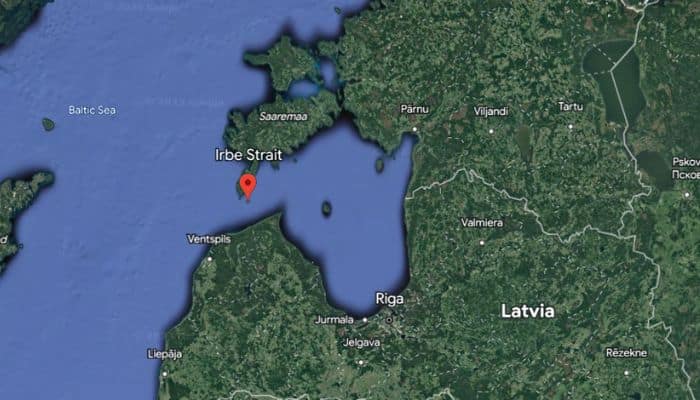
The Strait is 27 kilometres wide at its narrowest point. A channel for shipping has been dredged along the southern shore to enable cargo ships to pass through it.
4. Vainameri Sea is the northern part of the Gulf of Riga
Vainameri Sea, meaning ‘Strait Sea’ or ‘Sea of Straits’, is a sub-bay of the Baltic Sea, lying between the West Estonian Archipelago and mainland Estonia.
It is the northern part of the Gulf of Riga, which extends northward to the eastern Baltic Sea. It is also home to the Vainameri Conservation Area. The Vainameri Sea covers an area of 2200 square kilometres or 850 sq miles.
A 35 km long shipping lane called the Kumari Channel runs north-south in the Vainameri Sea, with a depth of 5 m. The Rukki Channel goes east–west between Hiiumaa and Rohuküla port.
5. Pärnu Bay lies in the northeastern part of the Gulf of Riga
Located in southern Estonia, Parnu Bay is a part of the Gulf of Riga. It covers 411 square kilometres and has a maximum depth of 12 m at its mouth.
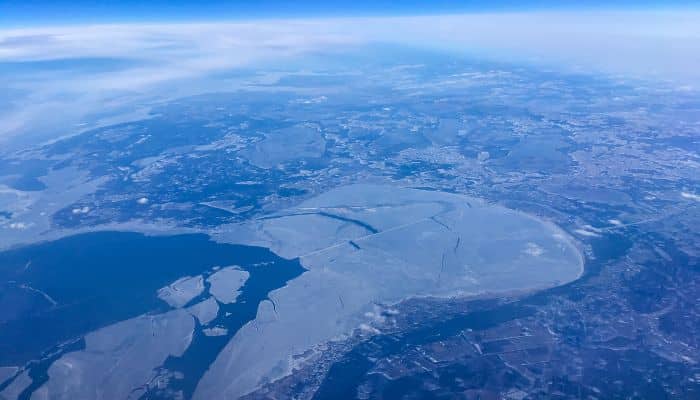
It is characterised by low-lying and sandy banks and has a water salinity ranging from 0-0,8 ppm in the spring and up to 5.5 ppm in autumn. The bay is also the most important coastal fishing area in Estonia.
6. Home to Estonian Islands: Saarema, Ruhnu and Kihnu
Famous islands in the Gulf of Riga include Saarema, Ruhnu and Kihnu, all controlled by Estonia. Saaremaa is the biggest island in Estonia, spanning 2673 km2.
It forms the primary barrier between the Gulf of Riga and the Baltic Sea.
The island has many natural resources like dolomite, limestone, sand, clay, gravel, natural mineral water etc.
Kihnu is the biggest island in the Gulf of Riga, covering 16.4 km2. It is 7 km long and 3.3 km wide. Its highest point is around 8.9 m above sea level.
Ruhnu is famous for its landscapes and age-old architecture. It has a historic lighthouse on its highest point, Haujberre Hill. Gustave Eiffel designed it in the 1800s.
The Ruhnu wooden church was constructed in 1644, making it one of the oldest wood-constructed buildings in Estonia.
It has a baroque-style tower that was finished in 1755. Limo Beach is one of the island’s most famous and accessible tourist beaches.
7. Daugava, or Western Dvina, is the main river flowing into Gulf Of Riga
Apart from Daugava, Parnu, Lielpe, Gauja, and Salacia are other main rivers draining into the Gulf of Riga. Due to these rivers that constantly carry freshwater, the salinity levels in the gulf are low, which leads to the waters freezing in winter.
Apart from the inflow of river water, other factors like evaporation and precipitation also affect salinity. Usually, the Gulf of Riga has low salinity levels than the waters of the Baltic Sea.
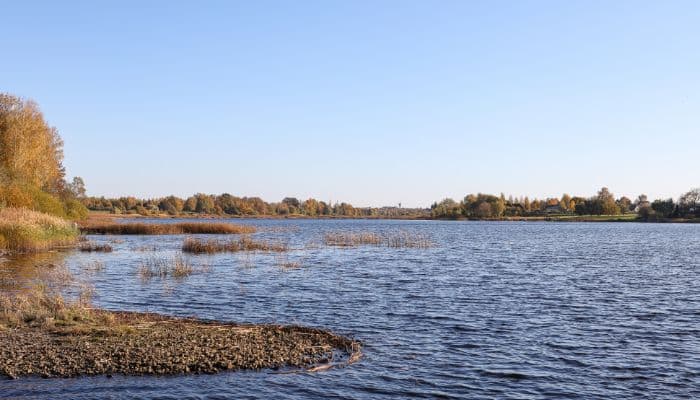
Freshwater entering the Baltic Sea accounts for two per cent of the gulf’s volume. A narrow connection between the North Sea and the Baltic Sea extends the average time of waters staying in the Baltic to around 30 years; hence, the sea is quite brackish.
On average, the salinity here ranges from 6 to 10 parts per thousand, but these levels fluctuate around the year due to seasonal variations and weather conditions.
Snow melts During spring, and freshwater input from rivers is high, leading to quite low salinity. When there is less rainfall and prolonged dry periods, salinity levels rise.
Also, the shallow depths of the gulf lead to lower levels of salinity, as evaporation rates are lower compared to deeper marine environments.
8. Experiences mild summers and cold winters
The Gulf of Riga experiences large temperature fluctuations. During summer months extending from June to August, the average temperature in the Gulf of Riga ranges between 15°C (59°F) to 20°C (68°F). The temperature can go up to 25°C (77°F) or above during heatwaves.
Winters, which last from December to February, are extremely cold, with temperatures ranging between -5°C (23°F) to 0°C (32°F).
During this time, a thick layer of ice forms on the water’s surface, which is so strong that quite a few people walk on it to cross the bay. The thickest ice layer was recorded in 1941, 35.4 inches or 90 cm thick.
The Gulf of Riga receives moderate rainfall throughout the year, which is also evenly distributed, with slightly higher amounts in summer.
The sea temperature is also influenced by seasons. It is usually 0°C (32°F) or below in winter and 15°C (59°F) to 20°C (68°F) on average in summer.
9. Baltic Herring is commonly found in the Gulf of Riga
The Gulf of Riga supports several kinds of sea creatures, like crustaceans
(shrimp, crab, lobsters), that are also found in the Baltic Sea. High oxygen levels in the gulf’s water create viable conditions for pelagic fish and benthic organisms.
The most common fish species are baltic herring, sprat, flounder, cod, pikeperch and salmon. Numerous phytobenthic species of marine life live here due to low salinity and silty sediments.
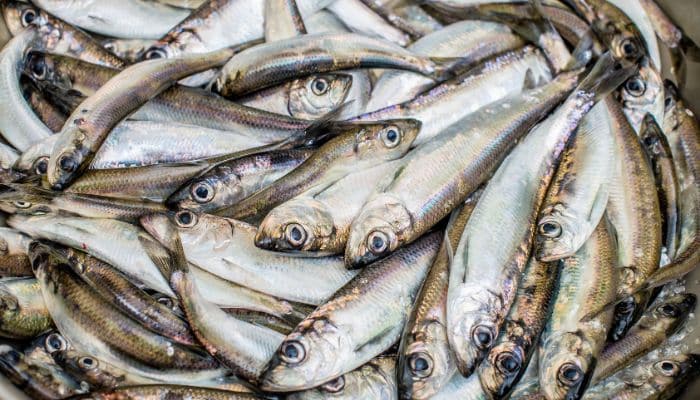
The Gulf of Riga is home to many species of anemones, which are colourful and beautiful marine invertebrates.
The rocky shores and coasts of the Gulf of Riga provide habitats for mussels and barnacles, which attach themselves to these rocks and other hard surfaces.
It is also an important area for migratory birds, especially during the spring and autumn. You can find seagulls, ducks, swans, cormorants, and geese.
Grey seals can be seen breeding and giving birth to their pups on small islands and coastal areas of the Gulf of Riga.
10. Ice fishing is an important industry in the Gulf of Riga during winter
Ice fishing is a famous activity in the Gulf of Riga during winter when the sea surface freezes. The frozen waters enable ice fishermen to access fish that thrive in the cold.
Fishermen use special equipment for ice fishing to drill holes through the ice and reach the water below. Usually, ice augers are used along with ice fishing rods, fishing lines and ice fishing shelters or tents to protect against the cold weather.
Various techniques are employed, like jigging or baited lines with hooks to catch fish.
The ice fishing industry in the Gulf of Riga holds great economic significance for local communities as it offers income opportunities for professional and recreational fishermen. It also supports industries such as equipment suppliers and hospitality services.
Ice fishing here is regulated by local authorities to ensure sustainable practices and the safety of fishermen.
11. Many environmental organisations are working in the Gulf of Riga
People are not very aware of the negative effects of climate change on the small Gulf of Riga. However, there are many organizations that ensure that people are vigilant and do not pollute or harm the marine life of the Gulf.
Gulf of Riga Advisory Council brings together fisheries organizations, environmental NGOs, and government representatives to promote sustainable fisheries management and marine conservation in the Gulf.
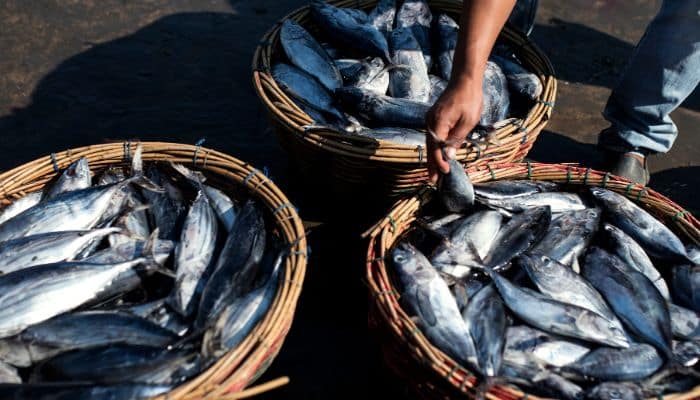
Baltic Environmental Forum work on projects related to water quality, marine conservation, and sustainable fisheries in the Gulf of Riga and surrounding areas.
Latvian Fund for Nature works for habitat restoration, biodiversity monitoring, and promoting sustainable resource use.
Estonian Fund for Nature aims at preserving the biodiversity and ecological balance of the Gulf of Riga.
Latvian Government has made many coastal policies, in which some regions have been marked under the Protection Zone Law. The Gulf of Riga and the Baltic Sea come under the purview of these policies.
Tourist sites along the Gulf of Riga coast have billboards and signs with information about restricted actions.
12. Port of Riga is the largest and busiest port on the Gulf of Riga
The Port of Riga lies in the capital city of Latvia, at the mouth of the River Daugava. It provides access to the Baltic Sea and is a hub for trade and transportation in the region.
The main cargo handled here includes coal, grains, foodstuffs, cotton, metals, ores, timber, fish, fruits, sugar, machinery, and chemicals. It has specialised facilities for oil products, fertilisers and containers.
With a berthage of 13,818 m, the port can accommodate all types of ships and cargoes. Around 4,050 vessels, 34,100,000 tonnes of cargo, and 770,000 are passengers handled annually.
It is open all year, though icebreaker assistance is needed in winter.
The city of Riga also produces machine tools, diesel engines and has a shipbuilding industry too.
The city of Jurmala, on the coast of the Gulf of Riga, is among the most popular destinations in Estonia. It is a resort town having a 20-mile coastline, nestled between the Lielupe River and the Gulf.
Famous tourist attractions here include Dzintari Forest Park and Ķemeri National Park. Other notable cities along the Gulf of Riga coast are Parnu and Kuressaare.
13. Site of the famous Battle of Riga in 1915
The battle of Riga occurred during the First World War. It was a naval operation in which the German navy fought against the Russians in the Gulf of Riga in 1915.
The aim was to destroy the naval forces of Russia and prepare for the landing of German troops there to aid in the fall of Riga, which was at that time under the control of Russia.
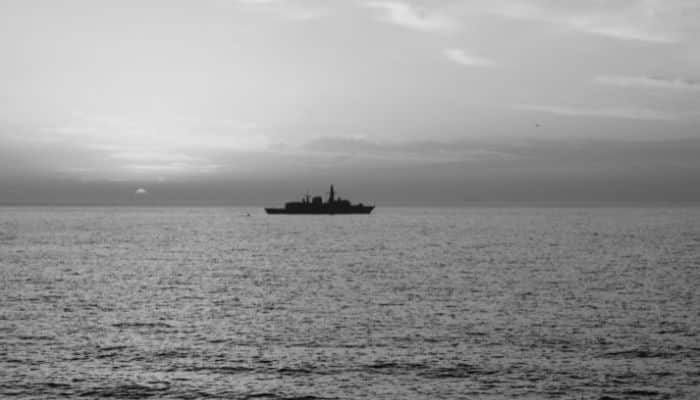
Germany failed in its task, and its navy returned to its bases. It was not until 1st September 1917 that Riga fell into German hands. The capture of Riga was an important victory as it provided Germany with a strategic base and access to the Baltic Sea.
German occupation of Riga was short-lived. In November 1918, World War I was ending, and Germany’s position weakened. Allied powers imposed an armistice, leading to the withdrawal of German forces from Riga and other occupied territories.
After German forces left, various factions fought to control Riga during the Russian Civil War. There were conflicts between the newly formed Latvian national forces, Bolshevik forces, and German Freikorps units.
Eventually, the Latvian forces, supported by British and Estonian troops, won and established the independent Republic of Latvia.
You might also like to read-
- 10 Denmark Strait Facts You Might Not Know
- 10 Gulf Of Alaska Facts You Might Not Know
- 10 Baffin Bay Facts You Should Not Miss Out
- 10 Buildings In The World Inspired By The Sails Of A Ship
- 10 Longest Ships In The World
Disclaimer :
The information contained in this website is for general information purposes only. While we endeavour to keep the information up to date and correct, we make no representations or warranties of any kind, express or implied, about the completeness, accuracy, reliability, suitability or availability with respect to the website or the information, products, services, or related graphics contained on the website for any purpose. Any reliance you place on such information is therefore strictly at your own risk.
In no event will we be liable for any loss or damage including without limitation, indirect or consequential loss or damage, or any loss or damage whatsoever arising from loss of data or profits arising out of, or in connection with, the use of this website.
Do you have info to share with us ? Suggest a correction
Disclaimer :
The information contained in this website is for general information purposes only. While we endeavour to keep the information up to date and correct, we make no representations or warranties of any kind, express or implied, about the completeness, accuracy, reliability, suitability or availability with respect to the website or the information, products, services, or related graphics contained on the website for any purpose. Any reliance you place on such information is therefore strictly at your own risk.
In no event will we be liable for any loss or damage including without limitation, indirect or consequential loss or damage, or any loss or damage whatsoever arising from loss of data or profits arising out of, or in connection with, the use of this website.

About Author
Zahra is an alumna of Miranda House, University of Delhi. She is an avid writer, possessing immaculate research and editing skills. Author of several academic papers, she has also worked as a freelance writer, producing many technical, creative and marketing pieces. A true aesthete at heart, she loves books a little more than anything else.
Latest Maritime Knowledge Articles You Would Like:
Daily Maritime News, Straight To Your Inbox
Sign Up To Get Daily Newsletters
Join over 60k+ people who read our daily newsletters
By subscribing, you agree to our Privacy Policy and may receive occasional deal communications; you can unsubscribe anytime.



